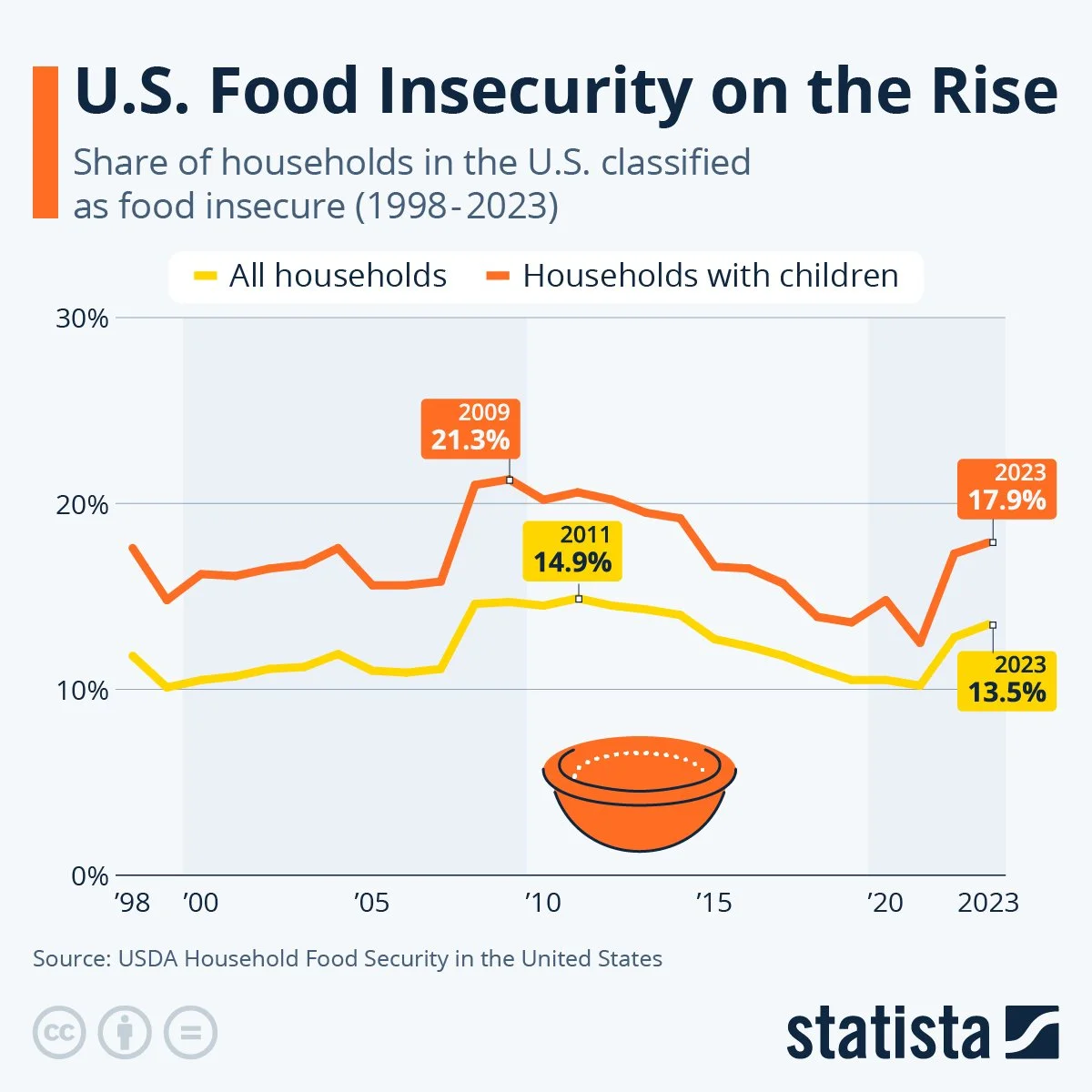
Learn

World Hunger
“Hunger is still the world's biggest health problem. And it’s about to get worse.”
“9 million People Die or 25,000 People Every Day in the world from Hunger and Hunger-related Diseases Every Year.”
“More than from AIDS, malaria and tuberculosis combined.”
“Poor nutrition and hunger is responsible for the death of 3.1 million children a year in the world. That’s nearly half of all deaths in children under the age of 5.”
“The children die because their bodies lack basic nutrients.”
“1 in 9 people in the world go to bed hungry”
“Globally, 822 million people suffer from undernourishment.”
“113 million face acute hunger meaning they are in urgent need of food.”
Source: Real time count of deaths due to hunger: The World Counts
World Hunger is Growing
“The number of people experiencing hunger has gone up by approximately 152 million since 2019. Half of all child deaths are linked to malnutrition.”
Source: Concern Worldwide
Rising Food Prices Cause More Hunger
Higher food prices due to several factors are increasing world hunger.
“Food insecurity has been rising since 2018. Even before Russia’s invasion of Ukraine, the increasing frequency and severity of climate shocks, regional conflicts and the pandemic were all taking their toll, disrupting food production and distribution, and driving up the cost of feeding people and families.”
“The situation took an even more dramatic turn with the war in Ukraine. This pushed the prices of food and fertilizers higher still—hurting importers and prompting several countries to impose export restrictions.”
“The result is an unprecedented 345 million people whose lives and livelihoods are in immediate danger from acute food insecurity. And around the globe more than 828 million people go to bed hungry every night”

Hunger in The United States
Source: Feeding America
HUNGER IN THE US IS GROWING
47 million people in the US face hunger.
14 million or 1 in 5 children face hunger.
“One in 7 households (13.5%) experienced food insecurity, or lack of access to an affordable, nutritious diet. 47.4 million Americans live in these households.”
“13.8 million children lived in food insecure households up 3.2% from 2022”
Source: USDA's 2023 report: Household Food Insecurity in the United States
In 2022, 49 million people in the US needed food assistance.
“Food banks, food pantries and community organizations unite to help millions of people access affordable, nutritious food for themselves and their families.”
Source: Feeding America's: Charitable Food Assistance Participation report
People experience food insecurity in every community.
This is because of factors like poverty, unemployment, and the cost of living.
Source: statista
Source: USDA 2022 ERS Report
Demand for food is dramatically rising at food pantries.
Demand for food in food pantries is rising in 2024 due to a number of factors, including inflation, the end of pandemic-era aid, and employment challenges:
Inflation: The cost of food has been increasing, with the USDA reporting a 10% increase in 2022 and a 5.8% increase in 2023.
End of pandemic-era aid: The federal government's food aid programs ended earlier in 2024.
Employment challenges: Wage stagnation and employment challenges have made it difficult for many people to keep up with the rising cost of living.
Middle and Fixed income households: Food insecurity rates have spiked among middle and elderly fixed income households and individuals.
The demand for food is growing everywhere including here in Utah where the Crossroads Urban Center in Salt Lake City Utah “served 95% more people in 2023 than in 2022, and the situation worsens with each passing month”.
Hunger is a root cause of poor health and early deaths.
“Hunger is widely considered a root cause of poor health in the United States, as food insecurity is linked to a range of chronic diseases like diabetes, obesity, hypertension, and mental health issues, significantly impacting the overall health of individuals experiencing hunger.”
Source: Food Research & Action Center








